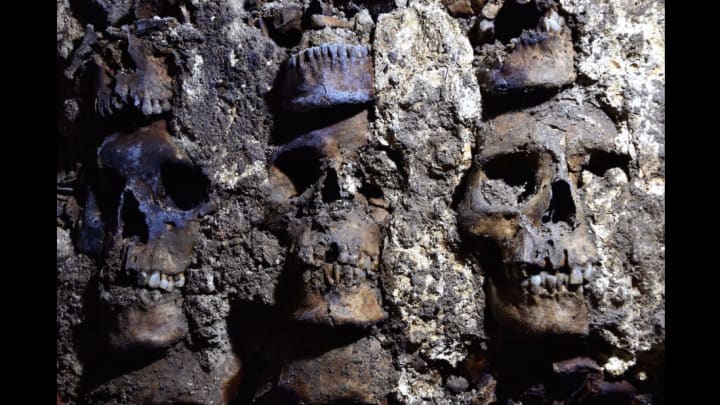As part of a restoration project, archaeologists in Mexico City recently excavated a portion of Huei Tzompantli—an ancient Aztec tower, which sits below street level. During the process, they unearthed 119 human skulls embedded in a wall.
While definitely momentous, it’s not wholly surprising. As Science explains, a tzompantli is essentially a giant rack that the Aztec used to display skulls from human sacrifices and prisoners of war. In the five years since Huei Tzompantli was first discovered, researchers have already counted 484 skulls within the structure, which was likely built sometime between 1486 and 1502. According to CNN, there are female and male skulls in this latest collection, and at least three of the victims were children.

“Although we can’t determine how many of these individuals were warriors, perhaps some were captives destined for sacrificial ceremonies,” archaeologist Raúl Barrera Rodríguez said in a press release. “We do know that they were all made sacred … Turned into gifts for the gods or even personifications of deities themselves.”
Though ritualistic sacrifice seems macabre by today’s standards, ancient civilizations like the Aztec considered it an absolute necessity in order to sustain the gods—who would, in turn, allow humans to keep living, too. In other words, showcasing large numbers of sacrificed skulls in tzompantlis symbolized the strength of life more than any horrors of death. This distinction was lost on—or intentionally ignored by—the Spanish conquistadors, who saw human sacrifice only as a savage practice and used it as one excuse to destroy the city of Tenochtitlan (part of modern-day Mexico City) in 1521.
By studying these additional 119 skulls, researchers are better equipped to uncover new details about the construction, history, and societal importance of Huei Tzompantli and other structures like it.
[h/t CNN]
